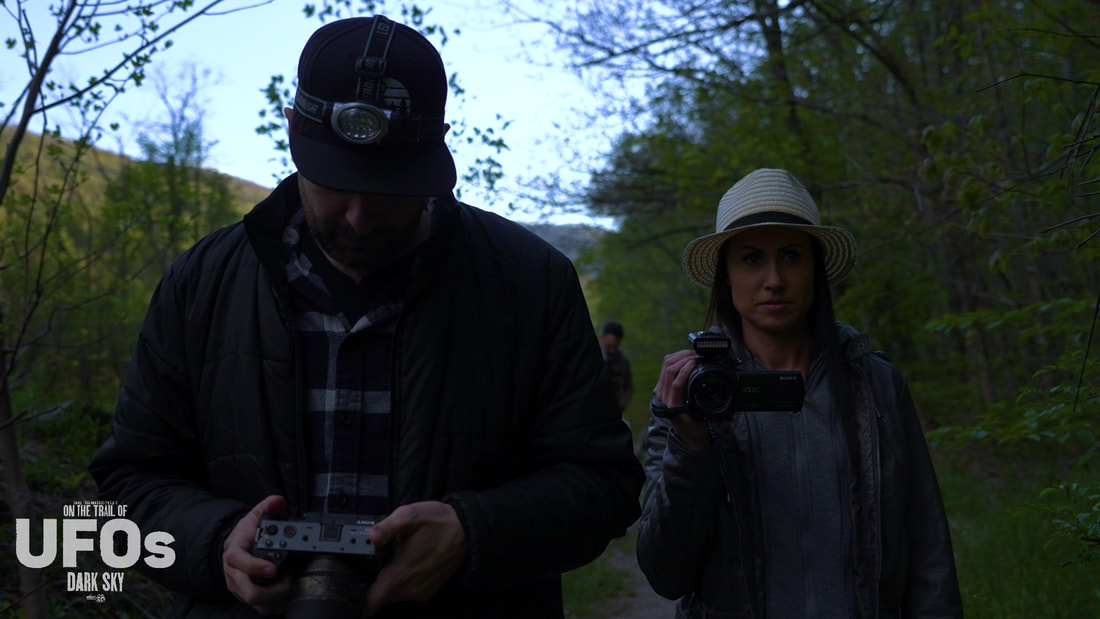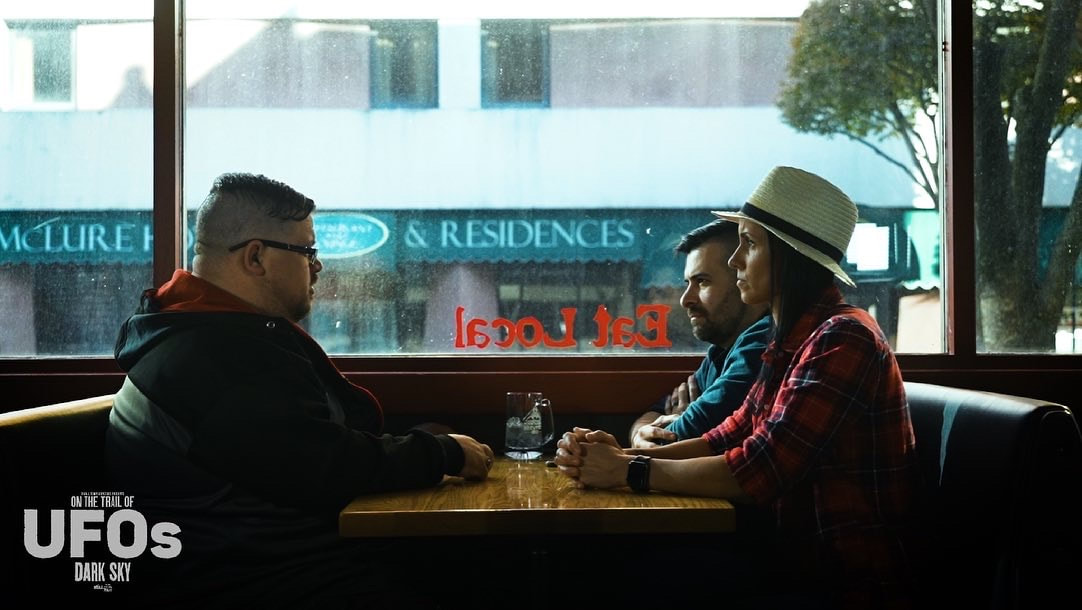|
Originally published on Elements of Madness. When we talk about strange and mysterious subjects that we’re nowhere close to understanding, like unidentified aerial phenomena (UAP) and the possibility of extraterrestrial life, it’s more useful to pose open-ended questions than to try and pinpoint definite answers. Asking broad questions about strange lights in the sky and creepy experiences allows us to consider a vast array of possible explanations and eventually land on an interesting theory. After investigating eyewitness accounts of UFOs in West Virginia, paranormal researchers Seth Breedlove and Shannon LeGro didn’t have any more answers than when they started. However, they did land on a useful question that could lead to further research: Is there a connection between UAPs and energy sources like coal mines? In On the Trail of UFOs: Dark Sky, Breedlove and LeGro share the eyewitness accounts and stories from their West Virginia investigations and ask intriguing questions about the connection between extraterrestrial sightings and energy sources. Although their questions are a useful piece of the UFO puzzle, they unfortunately don’t make for the most engaging documentary. Dark Sky is clearly a labor of love, but the final product is a loose musing rather than a structured and informative documentary. Dark Sky is a follow-up to Small Town Monster’s 2020 series, On the Trail of UFOs: Season 1. Author and podcaster Shannon LeGro provides occasional voice-over narration as she and Seth Breedlove investigate UAP sightings in the northeastern part of West Virginia, a region known for eerie legends like Mothman and the Flatwoods monster. LeGro and Breedlove interview a handful of West Virginia residents who share stories about unexplained sightings and encounters with odd people who may have been part of the fabled men in black. Dark Sky features stories from ordinary people like Katie Abernathy, who developed an interest in UFOs during her childhood when her grandfather helped with Project Blue Book, and from long-time UAP researchers like Susan Sheppard, an author, poet, and psychic who has studied West Virginia myths extensively. The collection of interviews is accompanied by digital recreations of these encounters that attempt to get our imaginations spinning. LeGro and Breedlove made the right choice to focus on storytelling. The personal stories in Dark Sky are the documentary’s greatest strength. Although the film might not come together as a whole, the individual stories give it a good bit of substance. In fact, personal stories are what make alien-related media so intriguing (without these stories, we might not have an ET research field at all). Whether you watch UFO documentaries as a skeptic, an open-minded theorist, or a hard-core believer, it’s the personal stories that make this type of media so fascinating. Dark Sky opens with a man telling a story about strange lights he used to see in the sky as a child. It’s a creepy tale, but it sets a personal tone for the documentary and adds a bit of credibility to a subject that raises a lot of doubts. Even if you don’t agree with his interpretation of what he saw, you can’t deny that he’s a good storyteller. There’s even a hint of nostalgia in his tale, making us feel like we’re sitting around a campfire listening to our grandparents tell stories. LeGro and Breedlove also boost the documentary’s credibility by interviewing a variety of people who interpret unexplained sightings in different ways. Some are positive that they saw aliens, others are open to different interpretations. LeGro even reminds us on multiple occasions that “UFO” doesn’t necessarily mean “alien spacecraft.” It can refer to anything in the sky that we just can’t explain. LeGro and Breedlove shift the UFO conversation from alien life to a range of possible explanations, like government aircraft. They keep the conversations in the documentary open, encouraging viewers to do the same. When it comes to UAP-related documentaries and podcasts, it’s good to ask broad questions and keep the conversations open. However, it’s also difficult to stay focused when you’re dealing with lots of loosely connected information from personal accounts. While Breedlove and LeGro had the right idea collecting stories and filming face-to-face interviews, they struggle to put these stories together in an entertaining and engaging way. It’s clear that they collected a lot of details for Dark Sky, but the documentary doesn’t have enough structure to support that information. Dark Sky is almost like the rough draft of an essay. The creators have a lot of ideas floating around in the movie, but those ideas aren’t presented in a way that will keep audiences engaged for an hour and 20 minutes. On that note, the visuals in Dark Sky aren’t as strong as the personal stories. Many of the shots act as mood-setting fillers that don’t add value to the film, and Dark Sky might have worked just as well as a series of podcasts without visuals. While it’s nice to see people’s faces as they tell their stories, the artistic re-creations of those stories start to take away from the documentary’s credibility. At first, those renderings help to get our imaginations going, but after a while they grow tiring and leave us wanting something more. Similarly, the landscape shots effectively set the mood at the beginning of the documentary, but after a while they stop serving a clear purpose other than to take up space. The slow-motion shots of LeGrow and Breedlove walking around with the people they are interviewing make the documentary seem staged and overdramatic. While Dark Sky presents lots of interesting stories, the final product doesn’t quite showcase the work and research that LeGrow and Breedlove did to make the documentary happen. Now available on VOD
0 Comments
Leave a Reply. |
"Our embodied spectator, possibly perverse in her fantasies and diverse in her experience, possesses agency...finally, she must now be held accountable for it." Categories
All
|







